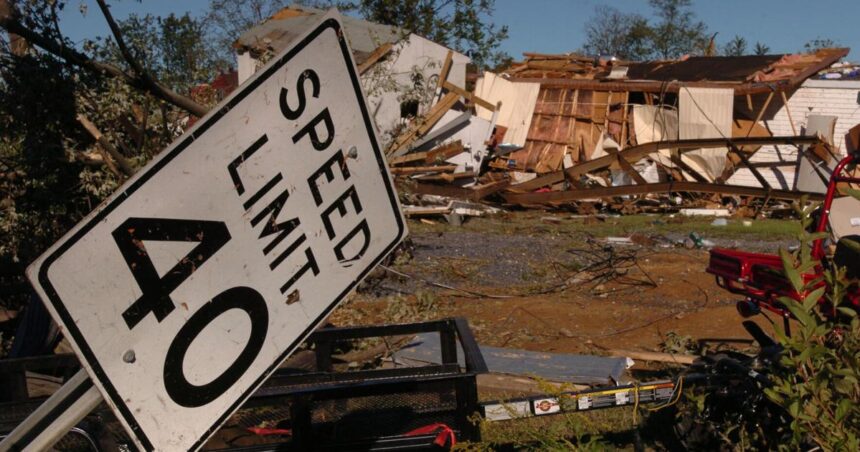In the recent two months, West Virginia has experienced at least 11 tornadoes due to powerful storms that swept through the state. This number is quite surprising for such a short time frame, and it may increase as more information is gathered about the latest tornado sightings.
During the Memorial Day weekend, two tornadoes were reported in the region, one in Putnam County and the other in Jackson, Ohio. Severe storms caused power outages for over 100,000 Appalachian Power customers, with about 18,000 still without power days later.
Strong winds and heavy rain on April 2 caused extensive damage and flooding in West Virginia and neighboring states, even breaking interstate billboards in half. Initially, the National Weather Service reported five tornadoes on that day. However, further analysis revealed that the number had increased to eight, and recently, the NWS confirmed a record-breaking 10 tornadoes touching down in West Virginia on April 2 alone.
People are also reading…
West Virginia has experienced a total of 15 tornadoes in 2024, surpassing the previous record of 14 set in 1998, and we’re not even halfway through the year yet.
While West Virginia averages about two tornadoes a year, high-activity years can skew this average. Climate change is likely contributing to an increase in tornadoes hitting the state, alongside rising floods and precipitation, which continue to break previous records.
The connection between climate change and more frequent or severe tornadoes is not as direct as with other weather phenomena. The National Oceanic and Atmospheric Administration notes the difficulty in studying tornadoes compared to other weather events, citing the unpredictability in supercell storms that produce tornadoes, making data collection challenging.
In 2021, a devastating tornado outbreak affected four states, causing extensive damage and fatalities. This event prompted calls for further research into the link between a warming climate and increased storm activity.
A warming climate can lead to more storm and superstorm formation, increasing the likelihood of tornadoes occurring throughout the year, according to NOAA.
“Tornado season” used to be associated with spring and summer months in Tornado Alley, but the recent surge in tornadoes across different locations and times of the year suggests changing patterns due to climate change.
March 2022 saw a significant increase in tornadoes across the U.S., reminiscent of numbers not seen since 1950, showcasing the impact of climate change on severe weather events.
NOAA predicts more tornadoes occurring in winter months due to ongoing record heat, indicating a shift in tornado patterns towards different seasons.
The recent tornadoes in West Virginia are likely not the last for the state in 2024. Until significant action is taken to address climate change, severe storms coupled with floods and power outages will continue to be a recurring occurrence.





